Why do you wonder that globe-trotting does not help you, seeing that you always take yourself with you? The reason which set you wandering is ever at your heels.
-Socrates
Right now, I’m back in Minnesota.
Over the past 5 weeks, I covered nearly 1100 miles on the Mississippi River and was honored to quietly pass through some of the most remote places in the United States. I camped on some of the most beautiful beaches I’ve ever seen, with no trace of humanity in sight as far as the eye could see. Although I never did make it to Baton Rouge in my canoe, I feel completely satisfied with my journey.
On the 4th of July, my brother and nephew came from Houston to meet me just north of Vicksburg. We loaded up the canoe and drove down Highway 61 through Vicksburg and Natchez, Mississippi, and had dinner in Baton Rouge, Louisiana. When we reached New Orleans, our first stop was the legendary Tipitina’s:
The picture above the band and behind the disco ball is Henry Roeland Byrd, more commonly known as Professor Longhair, who grew up on the streets of New Orleans and tap-danced for tips on Bourbon Street.
He developed a distinctive piano style by learning to play on a piano that was missing some keys. From local piano legends, he also picked up what Jelly Roll Morton called “The Spanish Tinge,” an Afro-Latin rhythmic touch that spiced up the more conventional jazz and pop rhythms.
Longhair’s first recording was in 1949 with a band called the Shuffling Hungarians, recording four songs for the Star Talent record label, including the first version of his signature song, Mardi Gras in New Orleans:
After the show, we explored the French Quarter and Bourbon Street:
Then we went to the hotel and hit the rack.
In the morning, they dropped me off at Amtrak in New Orleans’ Union Station to catch the “City of New Orleans” for the nineteen and a half hour train ride to Chicago. This is the train Steve Goodman wrote the song about, made famous first by Arlo Guthrie in 1972, and later by Willie Nelson in 1984:
Here’s the “City of New Orleans” route:
From Chicago to St. Paul, I’d ride the “Empire Builder.” Here’s that route:
That was the plan anyway.
Before the train reached Jackson, Mississippi, a derailment up north stopped it, and we had to turn around and go back to New Orleans. I booked a room downtown for the night and researched alternatives to get to St. Paul. Oh well, the train didn’t work out. How about the bus?
If I couldn’t get through the derailment, I could go around it and catch the train in Carbondale, Illinois. So I got a Greyhound bus ticket to Carbondale. However, the only way to get there was via Montgomery, Alabama, and then Nashville, Tennessee. The leg to Montgomery took me through Sidell, Louisiana; Biloxi, Mississippi; Mobile, and Montgomery, Alabama - a grand tour of the southlands. Why not?
So the next morning, I was back at New Orleans’ Union Station. This time, boarding a bus. It was a long trip, for sure, but fun meandering the southlands. It was like being on the river again.
While passing through Alabama, I thought about two entirely different versions of Stars Fell On Alabama, the great 1934 jazz standard composed by Frank Perkins with lyrics by Mitchell Parish. The first, Jack Teagarden singing and playing on this 1943 version:
...and the second, Cannonball Adderley’s 1960 version:
Pulling into Birmingham, Alabama, the Magic City, I was reminded of Sun Ra’s hometown and his Saturn album with his rendering on the cover of the old railway station, Birmingham Terminal Station:
Then, it was onto Nashville for a late-night transfer to another bus, the last, to Carbondale, which put me on the other side of the derailment.
I arrived at Carbondale at 4:30 a.m. Monday morning. They just completed building a new train depot in town. The old one, built in 1903, is just down the street and now serves as a railroad museum. The first trains ran in Carbondale on July 4th, 1854, almost 170 years ago to the day. As many as 53 passenger trains passed through the town each day during America’s peak railroad years.
I caught the train to Chicago at 7:30 a.m. and rolled into Chicago’s Union Station at 1:00 p.m.
Chicago’s Union Station was opened in 1925, replacing an earlier Union Station built on the site in 1881. It is beautiful. The main building, a square Neoclassical structure, takes up one city block. I had about an hour and a half layover at the station in Chicago before I boarded the Empire Builder for St. Paul.
As the sun was setting on the way to St. Paul, I crossed the Mississippi River at La Crosse, Wisconsin, and took this picture from the bridge:
After crossing the river, the tracks meet up with Highway 61 on the west side, and together they follow the river up through the Minnesota river towns of Winona, Lake City, Red Wing, Hastings, and then into St. Paul.
I finally made it to St. Paul at 11:00 p.m. on Monday. As nice as Chicago’s Union Station is, St. Paul’s Union Depot is even nicer:
In the end, it seemed only fitting that my journey home would be a meandering path through the middle of the country, much like the Mississippi River itself.
It was quite a journey, and here are some final thoughts…
First of all, I have to admit, on the river, I cried a little almost every day. They were, as the song goes, tears of rage, tears of grief. But on the last leg of the journey, I came to realize that life is brief.
My dad died 22 years ago, and it seems like last year, and my mom died 4 years ago, and it seems like last month, and Maclane died last August, and it still seems like yesterday. It occurs to me now, as I passed through the delta of my passing sorrow, that a year is like a day. Time just keeps moving on, like a river in the dawn. I must move with it.
Much of life is about crossroads and confluences, where consequential things happen. Some we go looking for, and others find us. Some bring happiness, and others bring sorrow and leave a mark that we wear forever, like a brand. They're coming, no doubt, but it’s how we deal with them that matters - not in a day but daily, facing into the wind and eyes front.
In a canoe, it’s difficult and dangerous to look behind you. You keep your eyes ahead and watch the water, read it, and observe the things going on out ahead of you. So too in life, we can’t keep looking behind us. We must look ahead and be diligent - the last frontier is deep inside us.
I think when I left Minnesota last month, I hoped the river I followed would lead me to the sea. But I discovered that just like that Big River called Jazz, all rivers flow together.
Over the past month, I have shared some of the things that drifted by my eyes and seeped into my ears. Now, let the demon have mercy.
Thanks for hangin’ in there with me…
Your true pilot cares nothing about anything on earth but the river, and his pride in his occupation surpasses the pride of kings.
-Mark Twain
Please hit this link to buy me a cup of coffee, if you’d like to show your guide some appreciation for this and past journeys. Know in advance that I thank you for your kindness and support.
If you like what you’ve been reading and hearing so far on our journey and would like to share this with someone you think might be interested in learning more about our great American art form, Jazz, just hit the “Share” button.
From Astaire to Sun Ra: A Jazz Journey is a reader-supported publication. If you feel so inclined, subscribe to my journey by hitting the “Subscribe now” button.
Feel free to contact me at any time to talk shop. I welcome and encourage that.
Until then, keep on walking….

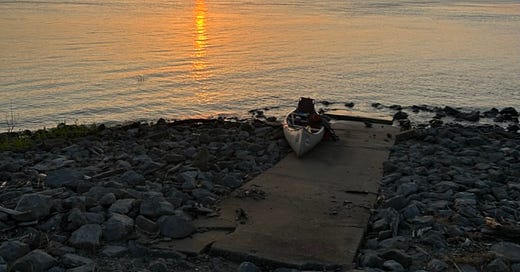



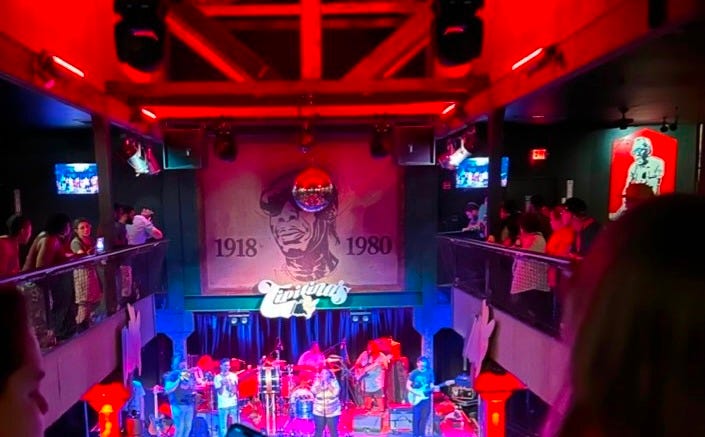

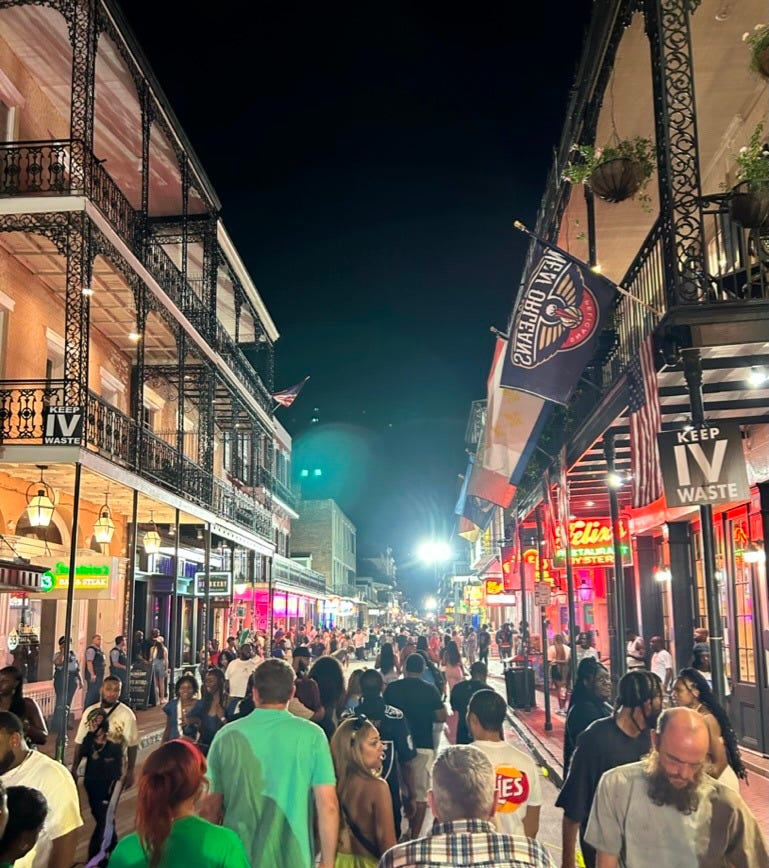
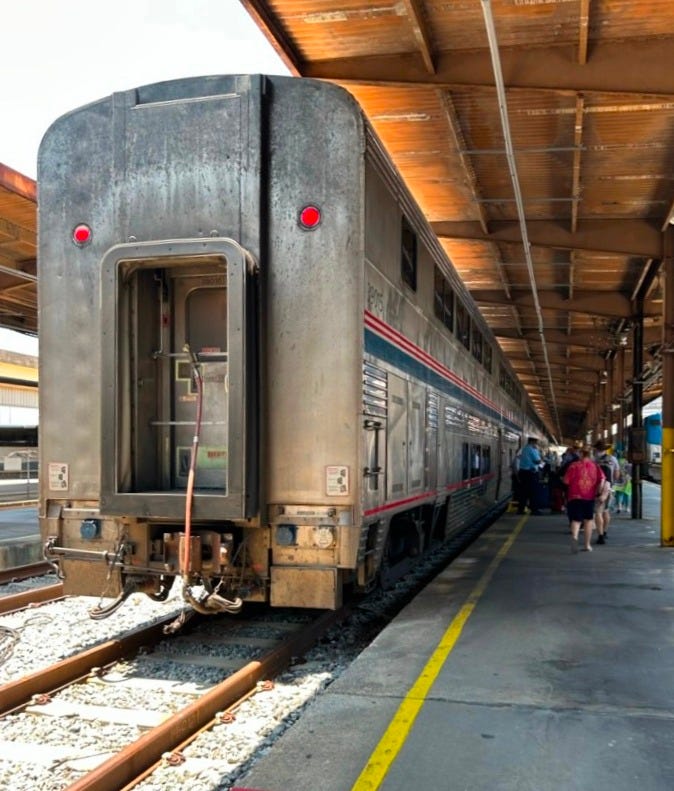
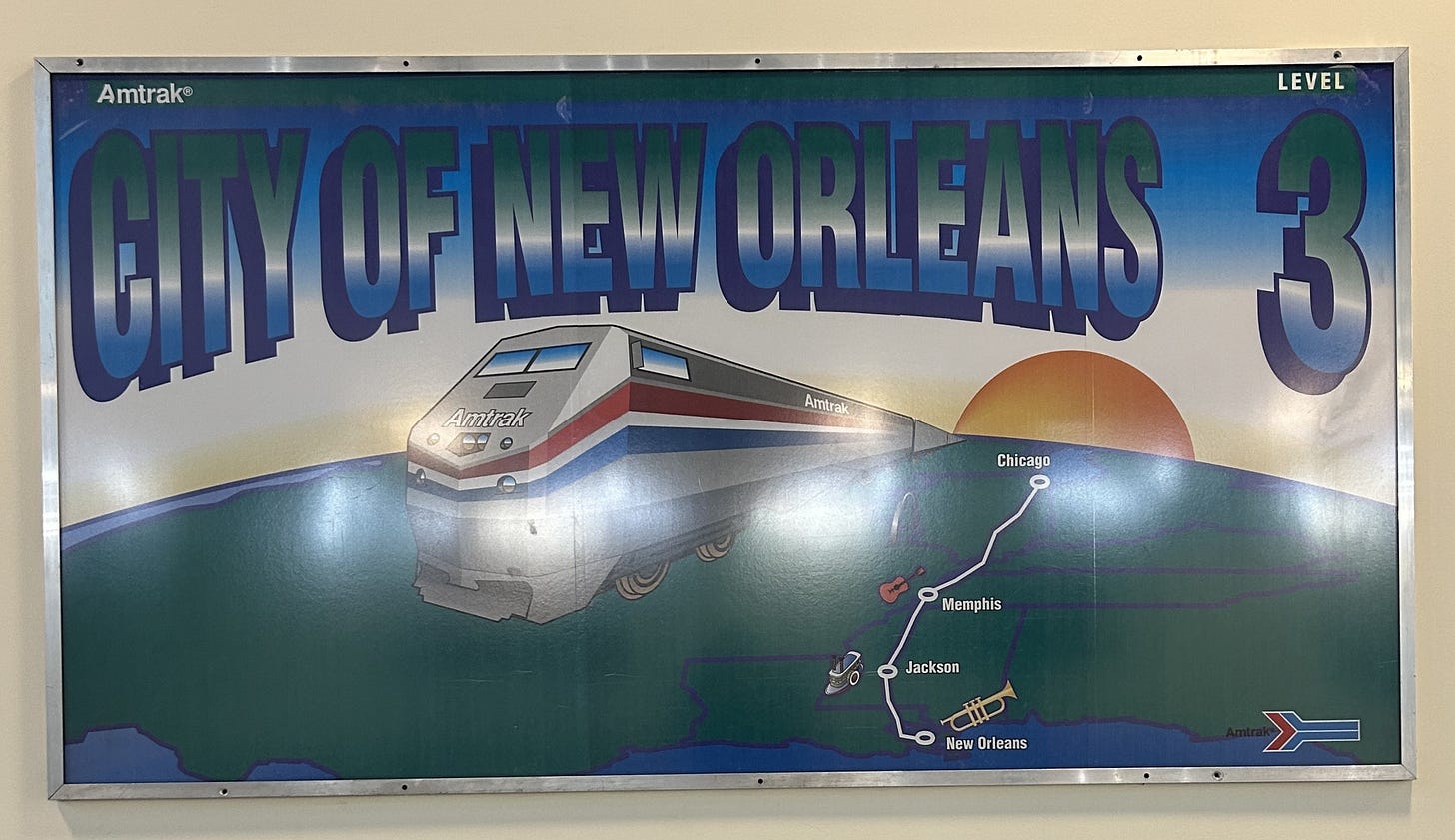

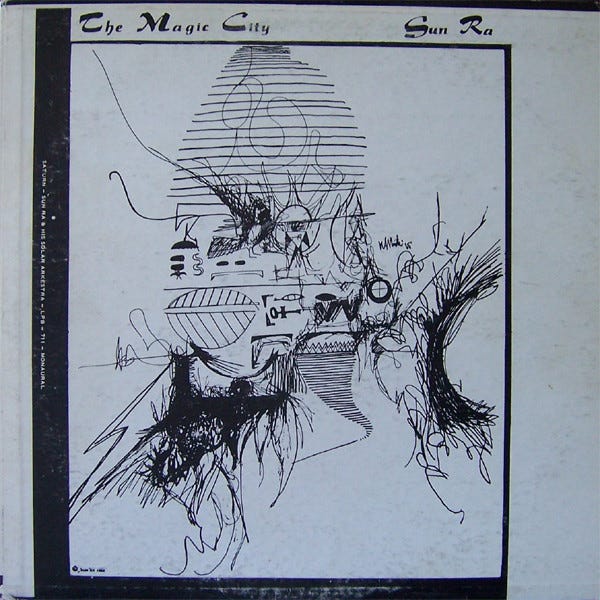
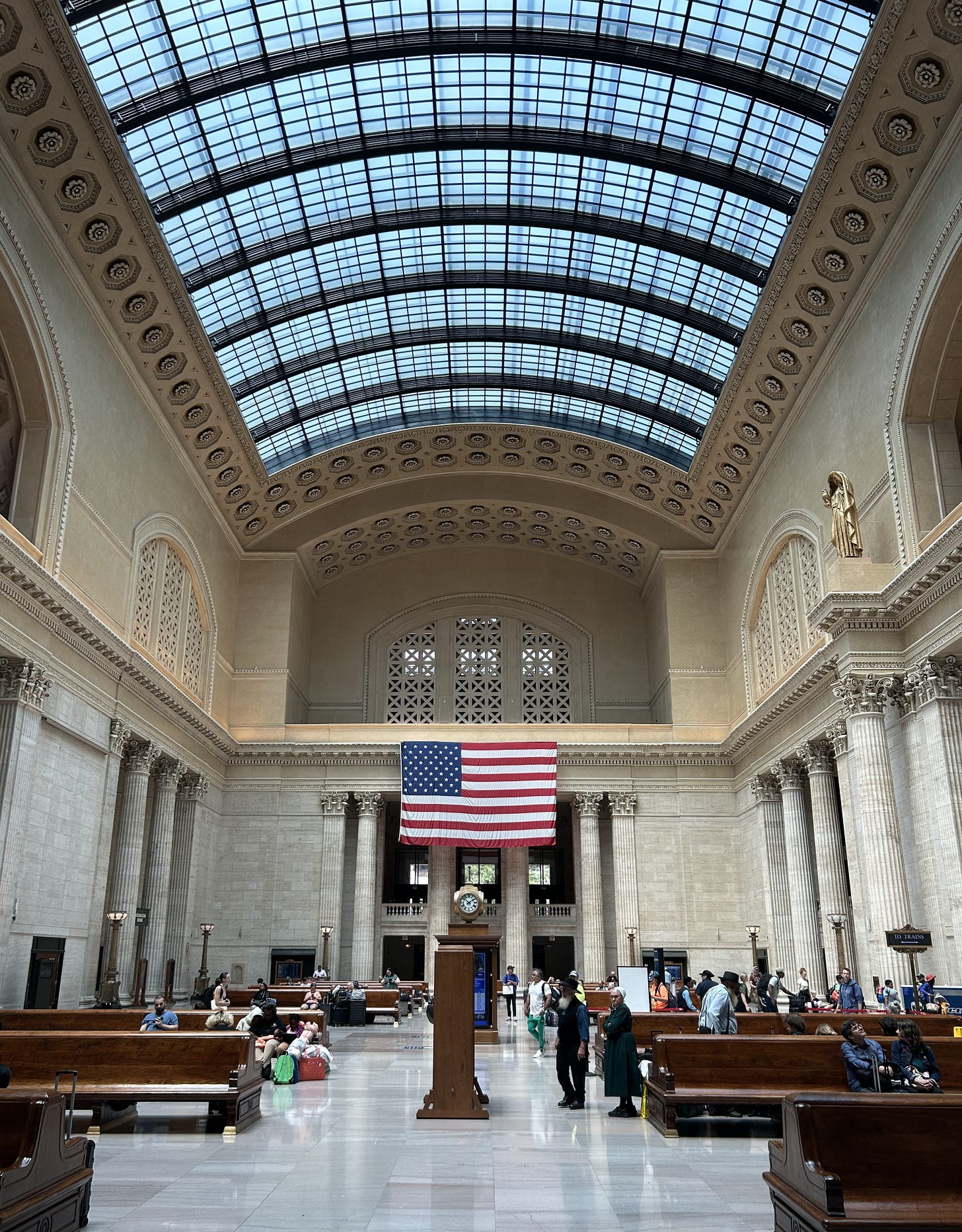

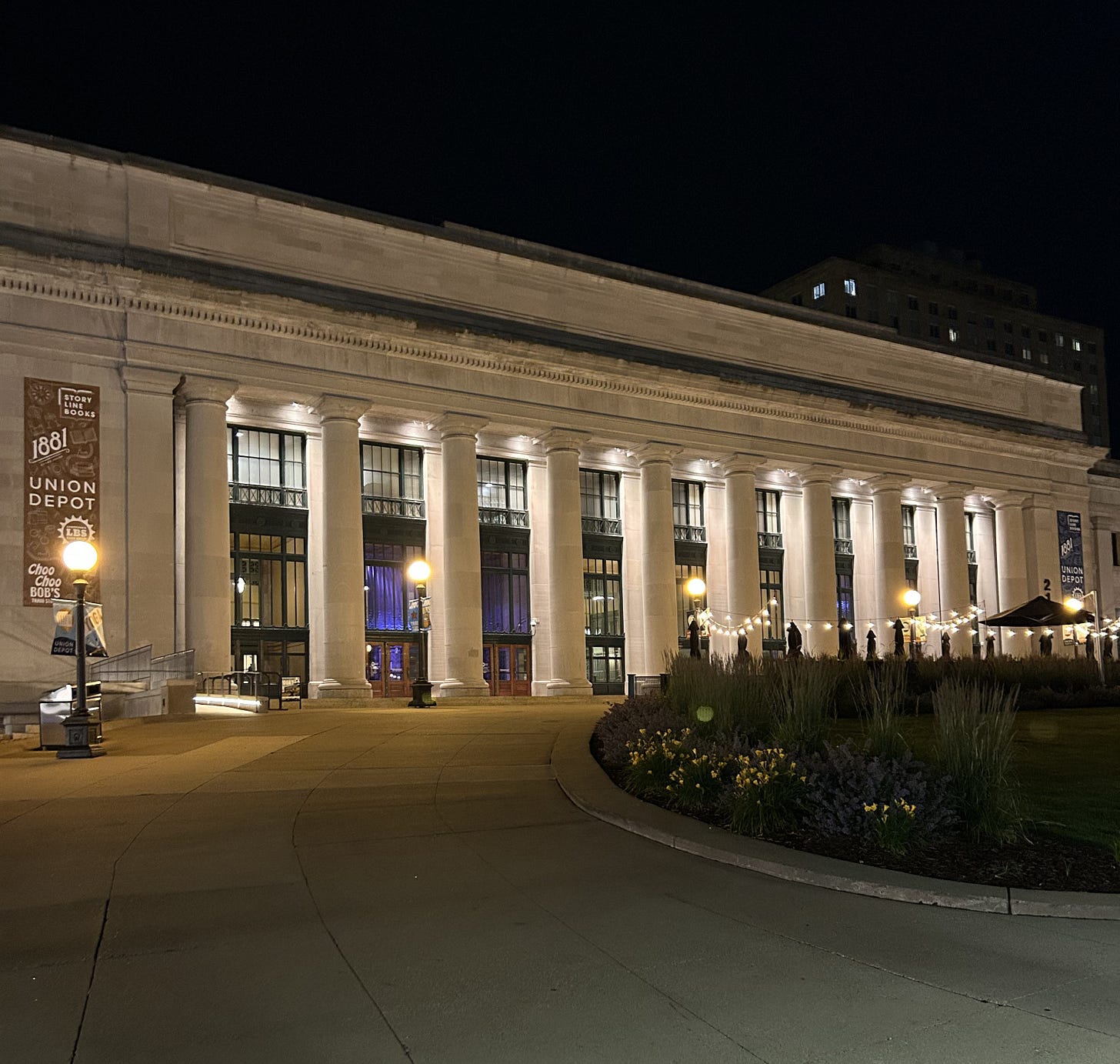
Nice ending, but I'm missing a detail: where did the canoe go? On the bus? on the train? I lost my father 11 years ago. But he's still very present for me, still can hear his voice. I hope you have a similar experience.
Well Done ,with both the pen and Paddle,thanks for this .l.c smith Gibsons BC Canada